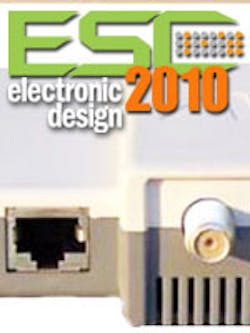SiliconDust HD HomeRun network HDTV recorder
VIA Technologies ARTiGo A1100 with HDMI output
The 2010 Embedded Systems Conference in San Jose was a long show for me as I had been on the road for a couple weeks. When I returned home I thought I would be able to catch up on some TV viewing. I have a MythTV setup with a SiliconDust HD HomeRun network-based HDTV recorder and 2 Tbytes of storage.
I was rather disappointed when I discovered that Comcast had moved another dozen channels so they were not accessible via Clear QAM (quadrature amplitude modulation). My wife didn't notice the change since she uses our main HDTV with an HDTV set top box (STB). About half of the recordings I wanted to look at were blank.
Build Your Own
Building a PC from scratch is a trivial exercise these days. Motherboards of all types are generally available. The number of peripheral options is mind boggling. Even so, if you can plug it together it will likely work giving you something useful.
A DVR (digital video recorder) is nothing more than a PC with an image capture card that pulls signals off an antenna or cable. The problem in this instance is that the capture cards will not work with most satellite or cable systems because an STB is needed. The approach essentially blocks everyone except the STB vendor from using the device.
In theory, a multi-stream CableCard (M-Card) provides a mechanism to access the channels without an STB. This is how Tivo works. It is one of the few vendors that have licensed M-Card support but this option is not available to designers in general. AMD ATI has the ATI TV Wonder Digital Cable Tuner but good luck trying to write Windows applications that work the platform. The bundled applications are the only ones that will work with the hardware.
Why do we need access?
This situation is unlikely to get better. On the plus side, STB/DVRs are generally available from your HDTV feed provider. On the downside, most of these products really suck. Ok, all of them do. Most are years behind in interface and features already available from a number of sources.
Years ago it was relatively easy to build anything from a radio to a TV set courtesy of Heathkit. It is still possible to do most of these and it is even possible to do some very advanced projects like building your own Segway. In fact, these days many electronics projects are actually easier given the plethora of low cost development kits and reference designs. Take VIA Technologies latest A1100. It is essentially a multimedia PC with gigabit Ethernet and HDMI output in a package not much larger than a large sandwich.
Still, there is a distinct difference in what can be done these days. Systems are more powerful and flexible but highly dependent on software. Most projects are likely to be embedded software projects. Even one of the more interesting platforms I have seen is stilted towards programming. This would be Actel's SmartFusion FPGA (see FPGA Combines Hard-Core Cortex-M3 And Analog Peripherals). It has a hard core Cortex-M3 microcontroller melded to the FPGA and a programmable analog subsystem. Extremely powerful and the FPGA will let a designer go wild but without software the Cortex-M3 will be just a useless power sink.
So where does this leave the build-your-own DVR? Take a look at Boxee, Netflix and similar platforms. The Internet is likely to be the source in the future but it remains to be seen whether a single platform, hardware or software, will deliver multimedia content. Of course, this assumes net neutral Internet access but that is another article.
So that is why is it so hard to build something useful? Or at least something I consider useful. What about you?
About the Author
William G. Wong
Senior Content Director - Electronic Design and Microwaves & RF
I am Editor of Electronic Design focusing on embedded, software, and systems. As Senior Content Director, I also manage Microwaves & RF and I work with a great team of editors to provide engineers, programmers, developers and technical managers with interesting and useful articles and videos on a regular basis. Check out our free newsletters to see the latest content.
You can send press releases for new products for possible coverage on the website. I am also interested in receiving contributed articles for publishing on our website. Use our template and send to me along with a signed release form.
Check out my blog, AltEmbedded on Electronic Design, as well as his latest articles on this site that are listed below.
You can visit my social media via these links:
- AltEmbedded on Electronic Design
- Bill Wong on Facebook
- @AltEmbedded on Twitter
- Bill Wong on LinkedIn
I earned a Bachelor of Electrical Engineering at the Georgia Institute of Technology and a Masters in Computer Science from Rutgers University. I still do a bit of programming using everything from C and C++ to Rust and Ada/SPARK. I do a bit of PHP programming for Drupal websites. I have posted a few Drupal modules.
I still get a hand on software and electronic hardware. Some of this can be found on our Kit Close-Up video series. You can also see me on many of our TechXchange Talk videos. I am interested in a range of projects from robotics to artificial intelligence.

